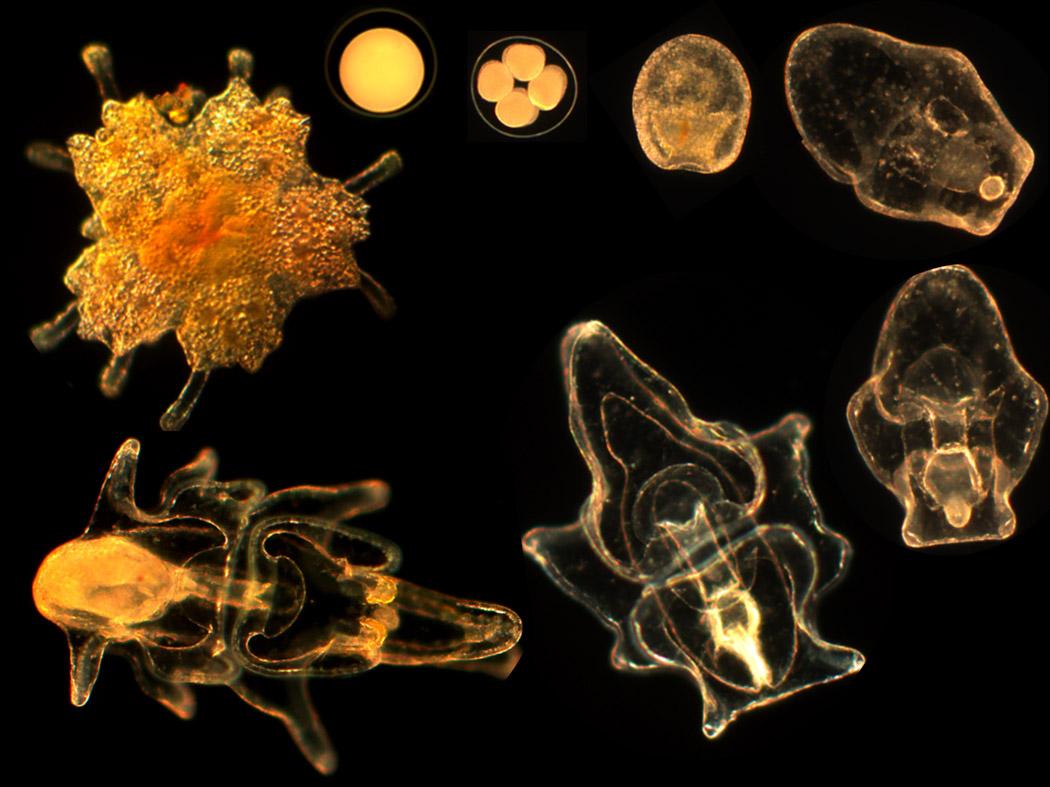The crown-of-thorns starfish (COTS) is a natural predator of corals in the Indo‐Pacific region, including the Great Barrier Reef (GBR). While they are native to the region, COTS are a leading cause of coral loss on the GBR. Since the 1960’s, the Reef has experienced three recorded major outbreaks of COTS, with populations erupting approximately every 15 years. A fourth outbreak is now in progress on the northern GBR.
During the spawning season, we conduct multiple experiments in which we raise COTS larvae until they can move onto the reef surface (a stage called settlement). Most of these experiments test the importance of food (small algae) in the survival of the COTS larvae, but we also test global change-related factors.
With help of SeaSim staff, we have developed a flow through larval culture system which allows raising larvae under more natural conditions. Larvae cultured in the SeaSim also assist in other COTS research, such as developing eDNA approaches to monitor COTS larvae and adults.
Surviving is a great challenge to young coral settlers and is a bottleneck in the process of reef restoration. In an effort to improve post-settlement survival, a suite of substrates are being developed and tested that provide corals with microcrevices that may protect them during early growth.
The timing of deployment and the growth of biofilm communities also impacts the attractiveness of the substrates to coral larvae, and has the potential to influence survival after settlement.
The aim of this project is to condition a variety of shapes and substrates in the field over different durations, to evaluate biofilm development across the substrates through time, and to assess survival after settlement. The substrates are already in the field being prepared ahead of spawning, and will return to the National Sea Simulator when the larvae are ready to settle. Then the corals will go back out to the reef and will be monitored for their performance over the next year.

